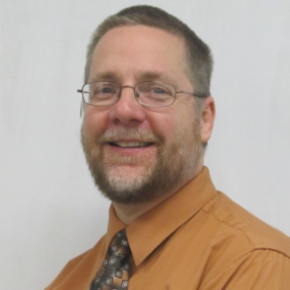
Gateway courses essential to student degree paths continue to be a barrier for institutional, faculty, and student goals. However, the large number of students enrolled in these courses often leads to lower student completion rates and the decision to redesign the course. While many institutions choose to redesign each course section independently, the most successful redesign teams improve student learning and lower costs by implementing a coordinated and scalable approach.
To learn more, we interviewed several key experts in this area:
- Danae Hudson, associate professor, psychology, at Missouri State University
- Daniel Miller, professor, mathematics, at Niagara County Community College
- Michelle Miller, professor, psychology, and co-director of the First-Year Learning Initiative at Northern Arizona University
- Brooke Whisenhunt, professor, psychology, at Missouri State University
Here are some key strategies they shared with us…
What is the most successful strategy you have implemented to gain faculty buy-in for a full course redesign?
 Danae Hudson: I think it is important to clearly define the challenges you are facing in your course and propose a well thought-out plan on how to address those challenges. Different faculty members have different strengths and finding a way they can meaningfully contribute to the team helps everyone to feel that their role is valued. Prior to undertaking our course redesign, I spoke with all of the faculty members who taught Introductory Psychology and asked them to be part of the team. I told them we would not proceed with the redesign unless everyone was either an active member of the team or, if they did not want to be part of the team, they would agree to support us in more distal ways.
Danae Hudson: I think it is important to clearly define the challenges you are facing in your course and propose a well thought-out plan on how to address those challenges. Different faculty members have different strengths and finding a way they can meaningfully contribute to the team helps everyone to feel that their role is valued. Prior to undertaking our course redesign, I spoke with all of the faculty members who taught Introductory Psychology and asked them to be part of the team. I told them we would not proceed with the redesign unless everyone was either an active member of the team or, if they did not want to be part of the team, they would agree to support us in more distal ways.
 Daniel Miller: To obtain faculty buy-in, do not focus on cost savings as the primary goal (though cost savings will occur). The greater efficiency provided by your redesign will translate into better course materials (created by collaboration), and increased student success. A better teaching/learning environment and better student results typically excite faculty more than the promise of cost savings.
Daniel Miller: To obtain faculty buy-in, do not focus on cost savings as the primary goal (though cost savings will occur). The greater efficiency provided by your redesign will translate into better course materials (created by collaboration), and increased student success. A better teaching/learning environment and better student results typically excite faculty more than the promise of cost savings.
 Michelle Miller: I believe that the most important strategy of all is to speak to faculty’s deeply held values. It’s easy to get lost in the details and cost analyses and lose sight of what really inspires faculty, which is teaching and learning in the discipline. In the case of NAU’s redesign of Introduction to Psychology, one of the things we kept clearly in sight was that the passive, lecture-heavy design of the course gave a false impression of subsequent courses in our department, and indeed, the discipline itself: easy, not too challenging, not a lot of effort involved to get an okay grade. Redesigning the course to ask more of students, such as required attendance and participation and mastery-style quizzes each week, tied directly into this higher-level view of our courses and ourselves as psychology professors. When you convey the need for change in this way – with an emphasis on student effort and accountability as well as the disciplinary quality of the course – faculty can be incredibly receptive to new and challenging ideas.
Michelle Miller: I believe that the most important strategy of all is to speak to faculty’s deeply held values. It’s easy to get lost in the details and cost analyses and lose sight of what really inspires faculty, which is teaching and learning in the discipline. In the case of NAU’s redesign of Introduction to Psychology, one of the things we kept clearly in sight was that the passive, lecture-heavy design of the course gave a false impression of subsequent courses in our department, and indeed, the discipline itself: easy, not too challenging, not a lot of effort involved to get an okay grade. Redesigning the course to ask more of students, such as required attendance and participation and mastery-style quizzes each week, tied directly into this higher-level view of our courses and ourselves as psychology professors. When you convey the need for change in this way – with an emphasis on student effort and accountability as well as the disciplinary quality of the course – faculty can be incredibly receptive to new and challenging ideas.

Brooke Whisenhunt: I think it’s important to make sure the redesign is faculty-led from the beginning. Every good faculty member struggles with challenges in their courses, and being able to engage in a process that allows those faculty members to work together to creatively address the challenges is something most faculty members can get behind. I think it is much more difficult to get faculty to “buy-in” when they feel that the impetus for redesign is more “top-down” and not tied directly to the course challenges as identified by the faculty and the students.
What is one pitfall within the redesign process that many may not be aware of?
Danae Hudson: Course redesigns take time and it is likely that there will be a number of staffing changes in upper administration during the redesign process. You need consistent support from administration, so it is important to keep good records, and if possible find at least one ally from the upper administration who can serve as your “cheerleader” or provide the institutional memory, if needed.
Daniel Miller: A huge pitfall is undergoing redesign when only a some of the stakeholders understand what is meant by the term “redesign.” Make sure that everyone on the redesign team, especially faculty, are clear on what is, and is not, meant by this term. Redesign does not mean to simply make changes, even if substantial, to individual sections of a course. Rather, redesign implies that all sections of the course will undergo a collaborative reformation.
Michelle Miller: Once you get into the hard work of building consensus and executing your plan, it’s tempting to settle for tinkering around the edges of a course instead of making deep, substantive changes.
A formal redesign project offers a rare opportunity to take a course down to its bare bones and reconnect its structure to the big goals of the class:
- What thinking skills and knowledge do you really want students to master?
- How can you elicit more of the productive effort that is the one and only basis for student success?
- How can you make the very best use of time spent on the course, both in and out of the classroom?
Many forces conspire to push us back to teaching the course in the old way – resource limitations, innovations that don’t work out perfectly on the first try, resistance from colleagues, and plain fatigue. Redesigners have to stay vigilant against these forces while keeping their vision firmly fixed on the ambitious goals that led them to the project in the first place.
Brooke Whisenhunt: In any large-scale redesign, the importance of a pilot class can’t be overestimated. At Missouri State, we conducted a pilot of one section of our redesign that helped us identify the strengths and weaknesses of our plan prior to implementing with 1500 students the next semester. Implementing new technology is always a challenge and having a pilot course to work out the technology challenges was vital to the success of our course when we moved to full implementation.
What is one step in this redesign process that does not often receive the attention it should?
Danae Hudson: There are so many new and exciting technological advancements in teaching and learning that sometimes people let the technology drive the redesign. It is critically important to define the goals and learning objectives for your course first, and then find the right method for achieving those goals. The other piece that is often neglected is the assessment plan. How will you know if your changes have been effective? The plan for how to assess change needs to be created from the very beginning of the redesign.
Daniel Miller: To do the best possible job of assessing your redesign later on, think carefully about the relevant data you need to collect from the current version of your course. Sometimes redesign teams find that though they can measure and adjust various aspects of the new version of the course, there are certain items that they are unable to compare to the old course due to lack of data.
Michelle Miller: When you’re in the stage of designing learning activities, it’s important to draw on research about how the mind takes in and uses information – i.e., learning theory. There are hundreds of different approaches you could take to setting up learning activities in any given course, and it’s tempting to simply pick a couple based on what seems appealing or easy. But the research literature provides a framework for making coherent design decisions that will provide the most return on time invested. Using the research literature in this way isn’t always easy to do, because new discoveries are being made all the time, and experts don’t always agree. It can get overwhelming, so you may want to consult with an instructional designer, cognitive psychologist or similar expert who can point you toward research that’s most relevant to the problems you are trying to solve.
Brooke Whisenhunt: Many times during our redesign process, we would become so involved in the process of designing the new learning environment, evaluating technology to help achieve our goals, and doing the hard work of developing the new class, that we would let the importance of assessment take a backseat. As psychologists, we were certainly well-prepared to develop a strong assessment plan and for the most part, we succeeded. However, our team struggled at times to find a way to consider all the ways we might measure outcomes in the redesign. In our Missouri State redesign, we wanted to compare our redesigned course to the traditional course and there are some things that we now wish we had assessed more thoroughly prior to implementing the change (e.g., attendance, number of students who decide to major in psychology as a result of their introductory course).

